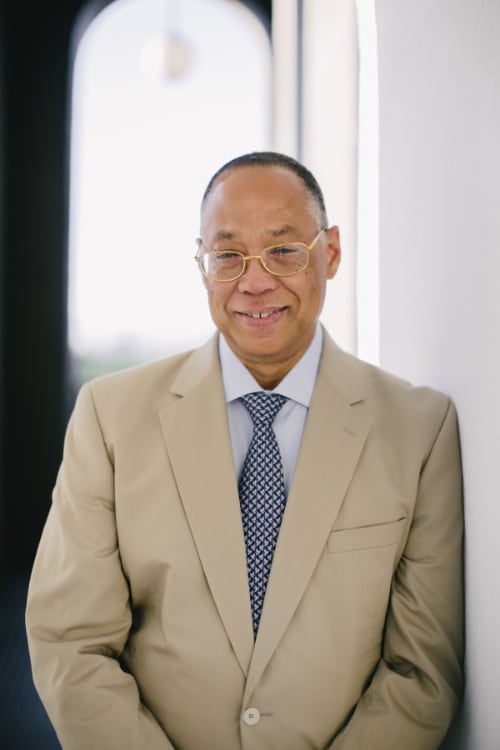Discectomy
“A discectomy removes a portion of a damaged disc. In most cases, a laminotomy is done to first expose the disc. Then, any part of that disc that presses on the nerve is removed. Disc matter that is loose or may cause problems in the future is also removed. Enough disc is left in place to cushion the vertebrae.”
Why It’s Done
People often move forward with a Discectomy procedure to help address and relieve pressure from a herniated or degenerative disc. Having a herniated or degenerative disc can lead to chronic pain throughout the neck, back and sometimes even reaching your arms and legs. You may be a candidate for this procedure if you are experiencing nerve weakness which impacts your ability to stand or walk, if steroid injections are not effective, or if the pain becomes too unbearable to manage on your own. Having a discectomy can provide a better opportunity to manage pain that may be emanating from your spinal nerves.
“A disc can weaken and push outward (herniate). Part of the disc may then press on the spinal cord and nearby nerves. This may cause pain in the neck and down the arm. It may also cause numbness and weakness in the arm and hand.
With age, discs may wear out and flatten. Vertebrae above and below the disc then begin to touch. This can pinch and irritate nearby nerves. Where vertebrae rub together, bone growths (spurs) may form. These may cause narrowing (stenosis) of the spinal canal or foramen. The nerves and spinal cord are further squeezed and irritated. This can cause or worsen numbness and weakness.
You have a disc problem in your cervical spine (neck). This can cause neck or arm pain that doesn’t go away. This can also cause numbness and weakness in your arm and hand. Over time, these symptoms can put limits on your life. If other treatments haven’t helped, cervical disc surgery may be an option.”
Risks
What To Expect?
During Discectomy
- In preparation for the procedure, you are positioned on your back and anesthetized.
- The surgeon creates a small incision in the front of your neck.
- The structures within your neck are gently moved aside to create a path to your spine.
- The surgeon carefully removes the damaged disc. This leaves a space between the vertebrae.
- The surgeon inserts a bone graft into this space. The graft fills the open space holding the vertebrae in the proper position.
- The surgeon may secure the graft with a metal plate and screws.
After Discectomy
- When the procedure is complete, the incision is closed. As your spine heals, new bone will grow.
- The graft will become permanently attached to the vertebrae.
Different Discectomy Procedures
Disc Replacement
“This procedure replaces a damaged disc with a new disc of manmade materials. First, a discectomy is done and most of the disc is removed. The vertebrae are gently moved apart. Then, the replacement disc is put between the vertebrae. The new disc is anchored into the bone. In time, bone will grow into and around the new disc to hold it firmly in place.”
Posterior Cervical Disc Surgery
“In some cases, the disc is reached through the back (posterior) of the neck. With this approach, bone may be removed from the back of the vertebra to enable your surgeon to reach the disc. A portion of the disc is then removed (Discectomy).
Reaching and Removing Bone and Disc
Your surgeon makes an incision in the middle of the back of your neck. First, a portion of the lamina may be removed. Bone may also be removed to enlarge the foramen. This allows the surgeon to reach the disc. It can also relieve pressure on nearby nerves. A portion of the disc is then removed. If present, bone spurs may also be removed.”
Anterior Cervical Disc Surgery
“During surgery, most of a problem is removed (discectomy). To reach the disc, an incision is made in the front (anterior) of the neck. After the disc is removed, two or more vertebrae may be fused together. Or, the problem disc may be replaced with an artificial one.
Reaching and Removing the Disc
Your surgeon makes an incision in your neck. Soft tissue is moved aside to expose the disc. Most of the disc is then removed. Your surgeon may also include any bone spurs that press on nerves.
Bone Graft
If you are having fusion, bone graft is needed. This substance causes the vertebrae to fuse. The graft may be manmade bone substitute. It may come from a human donor who has died. Or, it may come from your own body (in some cases, your pelvic bone). Your surgeon will discuss these options with you.”
Fusion
“Fusing vertebrae limits their movement. This can help reduce pressure on the nerves and spinal cord to relieve pain. First, most of the disc is removed. Then the space between the vertebrae is enlarged. This space is then filled with bone graft. Often, bone graft is put inside a device called a cage. The cage is then placed between the vertebrae. In some cases, the cage may be fixed to the vertebrae with screws. In others, a metal plate may be added over the front of the vertebrae and secured with screws. If used, the cage, screws, and plate remain in the body and are not removed.”
NEUROSURGEONS

Christopher Demers
MD, FAANS

Dante F. Vacca
MD, FAANS

Jay K. Morgan
MD, FAANS

Marshall Tolbert
MD, PhD, FAANS

Michael Moore
MD, MS, FAANS
Frequently Asked Questions
What is Neurosurgery?
Do I need surgery if I am being referred to a neurosurgeon?
Not necessarily. Your referring physician most likely believes that you have a disease or disorder which would benefit from diagnoses, testing and treatment by a neurosurgeon. The decision whether or not to recommend surgery is a complex one, best handled by your neurosurgeon and his/her team.
What is the difference between an orthopedic surgeon and a neurosurgeon?
Each of these surgical specialists has their own areas of expertise however, their skill and expertise overlap in the area of spinal surgery. Both specialties require 5-7 years of residency training, followed in some cases by additional time in fellowship training. Neurosurgeons perform spinal operations dealing with the cervical discs, nerves, and the bony spine, while orthopedic surgeons handle surgeries limited to the bony spine, such as spinal fusion.
How do I make an appointment with Sierra Neurosurgery Group?
Call us today at (775) 323-2080 or toll free (888) 323-2080. We have 5 locations to serve you: Carson City, Elko, Fallon, Reno and Sparks. If your health insurance plan requires a referral, contact your primary care or emergency room physician and request a referral to Sierra Neurosurgery Group.
What is the difference between a neurologist and a neurosurgeon?
A neurologist and a neurosurgeon are similar to a cardiologist and a cardiac surgeon: the neurosurgeon can offer a surgical solution to neurologic disorders, while the neurologist identifies neurological disorders through diagnostic testing and uses non-surgical treatment options.
Do you offer X-rays and MRI’s?
What to Expect From Your Visit
Sierra Neurosurgery Group is focused on providing the highest quality surgeries with the best possible patient care. We focus on creating a unique experience for each of our patients to show them we understand their current situation and to do our best to help them get back to living the life they want. We provide the best care to our patients because we have assembled a team of professionals with extensive surgical experience consisting of neurosurgeons, physician assistants, nurse practitioners, and interventional pain specialists. Our personnel, focus on patients, and quality of care allows Sierra Neurosurgery Group to be highly effective in creating the best results and outcomes for our patients.
